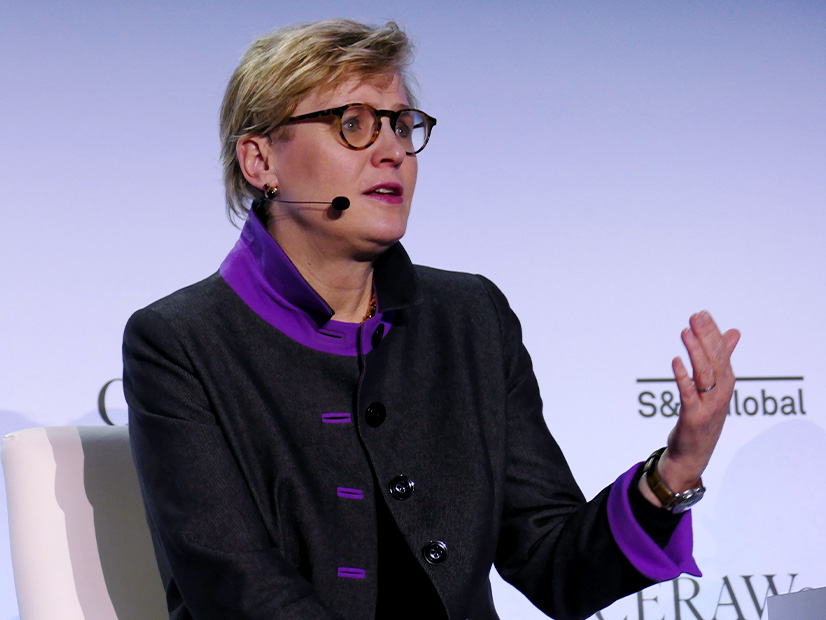
Portland General Electric’s rate hikes largely stem from increased wholesale power market costs, the utility wrote after Sen. Ron Wyden (D-Ore.) voiced concern that customers are struggling to pay their electricity bills.
PGE CEO Maria Pope responded to Wyden’s questions concerning increased electricity costs in Oregon in a Nov. 27 letter that described the immense growth the utility has seen in tech sector loads but stopped short of tying that development to the price pressures faced by residential ratepayers.
The Oregon Public Utility Commission (OPUC) approved 40% in price increases for PGE customers from 2020 to 2024, an annual average increase of 8%, according to Pope.
“These customer price changes over the last five years have primarily been driven by the rising costs to purchase necessary power from the open energy market to serve customers,” Pope wrote. “Power costs, which PGE has limited options to control and are necessary to maintain reliable service to customers, have nearly tripled in the past five years.”
Pope’s response follows Wyden’s contention in a separate letter that PGE customers’ electricity bills have gone up by at least 40% since 2021, while nonpayment shutoffs have increased.
“For folks that are walking an economic tightrope, balancing food and medicine bills with electricity prices, the rising prices are unsustainable,” Wyden wrote.
The lawmaker acknowledged that efforts to modernize the power grid have partly contributed to the price changes but added that “it is concerning to see the cost of electricity rise at this rate in such a short time frame.”
Wyden sent a list of seven questions to Pope’s office, requesting a response within 30 days.
Pope got back to the lawmaker two days later, highlighting various factors that have contributed to the price increases over the past four years. The CEO pointed to recent investments in energy facilities and infrastructure, wildfires, heat waves and inflation, among other things.
Energy deliveries in 2023 were 9.2% higher on a weather-adjusted basis than in 2019. In the 10 years prior, the utility saw growth of 2.8%. Industrial energy deliveries increased by 34.3% in the past five years, mainly driven by semiconductor manufacturing and data center segments, according to the letter. Over the same period, residential load grew by 5.2%, while commercial deliveries declined by 2.7%.
Wyden asked if PGE has taken steps to limit the cost increases to those sectors that have driven the most growth in the past five years and to explain whether and why residential customers could be bearing the costs for that growth.
Pope responded that rates for all customer classes are determined through OPUC’s public rate review process based on the utility’s cost of service to each class.
“Existing regulatory frameworks will need to evolve to appropriately reflect how investments serve different customers and how costs are allocated given the changes in the new large load demands,” she wrote. “Collaboration with regulators, policymakers and stakeholders is essential to help address these new realities and to keep the price of electricity as low as possible for residential and other business customers.”
‘Keep Pressing the Case’
Wyden also asked about costs not covered under the Inflation Reduction Act of 2022. The act aimed to cover 30% of the cost of new clean energy installations, the lawmaker’s letter stated.
Pope responded that clean energy resources are not the main culprit behind rate increases, saying that “[t]he cost of power purchased on the market and through the Bonneville Power Administration (BPA) to serve customer demand, address capacity constraints or … fuel thermal plants tripled between 2019 and 2024.”
“These costs are beyond the utility’s ability to control,” Pope added. “Over that same time, PGE’s own operating expenses underran the rate of inflation by 7%.”
Doug Johnson, a spokesperson for BPA, told RTO Insider the agency “makes transactions at prevailing market prices and competes in the wholesale market as both a buyer and seller of energy and capacity.”
“BPA, similar to PGE, has witnessed the value of these energy and capacity products fluctuate with a propensity to rise over the last few years as the demand for clean and reliable power and dispatchable resources has increased,” Johnson said.
“BPA was somewhat surprised to learn it had been singled out in the response letter,” he added.
Meanwhile, Wyden’s staff has contacted the OPUC to ask what else can be done to combat the increases, which exceed national averages, according to Hank Stern, a spokesperson for Wyden.
“[Wyden] appreciates PGE’s responsiveness to his letter and in addition to the fresh discussions with the PUC about available options, will follow up with PGE to keep pressing the case for fair rates that Oregon consumers can afford,” Stern told RTO Insider.


